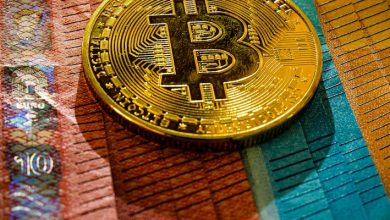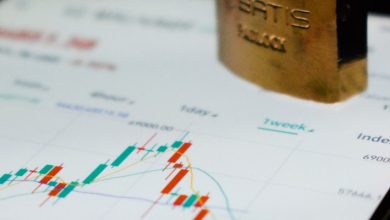The Role of NFTs in Future Market Trends

- Understanding NFTs: A Beginner’s Guide to Non-Fungible Tokens
- Exploring the Impact of NFTs on Traditional Markets
- The Rise of Digital Collectibles: How NFTs are Revolutionizing the Art World
- NFTs and Blockchain Technology: A Match Made in the Future Market
- The Future of NFTs: Predictions for Market Trends and Adoption
- Monetizing Creativity: How Artists and Creators are Leveraging NFTs for Success
Understanding NFTs: A Beginner’s Guide to Non-Fungible Tokens
Non-Fungible Tokens (NFTs) have been gaining popularity in recent years as a unique form of digital asset. Unlike cryptocurrencies such as Bitcoin or Ethereum, which are interchangeable with one another, NFTs are one-of-a-kind and cannot be replicated. This uniqueness is what makes NFTs valuable and desirable to collectors and investors alike.
NFTs are typically used to represent ownership of digital art, music, videos, and other creative works. By tokenizing these assets, creators can sell them as NFTs on various online marketplaces, providing a new way for artists to monetize their work. Additionally, NFTs can also be used to prove ownership of physical assets, such as real estate or luxury goods.
One of the key features of NFTs is their ability to be stored on a blockchain, a decentralized and secure digital ledger. This ensures that the ownership and authenticity of an NFT can be easily verified, providing transparency and trust in the marketplace. As a result, NFTs have the potential to revolutionize the way we buy, sell, and trade assets in the future.
Exploring the Impact of NFTs on Traditional Markets
Exploring the impact of Non-Fungible Tokens (NFTs) on traditional markets is essential in understanding the future market trends. NFTs have gained significant attention in recent years due to their unique ability to represent ownership of digital assets securely on the blockchain. As a result, traditional markets are starting to take notice of the potential disruptions that NFTs could bring to various industries.
One of the key ways in which NFTs are impacting traditional markets is through the tokenization of real-world assets. By creating digital representations of physical assets such as art, real estate, or collectibles, NFTs are enabling fractional ownership and trading of these assets in a more efficient and transparent manner. This could potentially open up new investment opportunities for individuals who may not have had access to traditional markets before.
Furthermore, NFTs have the potential to revolutionize the way intellectual property rights are managed and monetized. Artists, musicians, and other creators can use NFTs to authenticate and sell their work directly to consumers, eliminating the need for intermediaries and ensuring fair compensation for their efforts. This shift in the distribution of value could have far-reaching implications for industries that rely heavily on intellectual property.
Overall, the impact of NFTs on traditional markets is still in its early stages, but the potential for disruption is significant. As more industries start to adopt NFT technology, we can expect to see further integration of digital assets into traditional markets, leading to new opportunities for investors and creators alike.
The Rise of Digital Collectibles: How NFTs are Revolutionizing the Art World
The rise of digital collectibles is reshaping the art world, with NFTs leading the way in this revolution. Non-fungible tokens have opened up new possibilities for artists to showcase and sell their work in a digital format. These unique tokens are changing the way we perceive and interact with art, allowing for ownership to be verified and authenticated on the blockchain.
With NFTs, artists can reach a global audience without the need for physical galleries or intermediaries. This direct connection between creators and collectors has democratized the art market, making it more accessible and inclusive. The scarcity and authenticity of digital art are guaranteed by the blockchain, ensuring that each piece is one-of-a-kind and cannot be replicated.
Collectors are drawn to NFTs for their investment potential and the ability to own rare and valuable digital assets. The digital nature of these collectibles makes them easy to store, display, and transfer, eliminating the need for physical storage or transportation. As the demand for digital art continues to grow, NFTs are expected to play a significant role in future market trends, shaping the way we buy, sell, and collect art in the digital age.
NFTs and Blockchain Technology: A Match Made in the Future Market
The use of **NFTs** in conjunction with **blockchain technology** has paved the way for a revolutionary shift in the **future market** landscape. NFTs, or **Non-Fungible Tokens**, are unique digital assets that are indivisible and cannot be replicated. These tokens are stored on a blockchain, a decentralized and secure ledger that ensures transparency and immutability.
The seamless integration of NFTs and blockchain technology has opened up a plethora of opportunities in various industries, including art, music, gaming, and real estate. By leveraging blockchain technology, NFTs provide a **secure** and **transparent** way for creators to authenticate and sell their digital assets. This has led to a surge in interest and investment in NFTs as a new form of digital ownership.
One of the key advantages of NFTs is their ability to **tokenize** real-world assets, such as art pieces, music albums, and even virtual real estate. This allows for fractional ownership and **trading** of assets that were previously illiquid. Moreover, the **traceability** and **provenance** of NFTs on the blockchain ensure that the ownership history of a digital asset is securely recorded and cannot be tampered with.
As the **future market** continues to evolve, NFTs are poised to play a significant role in shaping **trends** and **innovations**. With their ability to **tokenize** and authenticate digital assets, NFTs provide a new way for creators and collectors to interact in a **decentralized** and **trustworthy** manner. The **intersection** of NFTs and blockchain technology represents a **paradigm shift** in how digital assets are created, **exchanged**, and **valued** in the **future market**.
The Future of NFTs: Predictions for Market Trends and Adoption
As we look ahead to the future of NFTs, it’s clear that these digital assets are poised to revolutionize the way we buy, sell, and trade unique items. Several market trends and adoption patterns are already starting to emerge, giving us a glimpse into what the future may hold.
- Increased mainstream adoption: As more people become familiar with NFTs and their potential uses, we can expect to see a surge in mainstream adoption. This will likely lead to a wider range of industries and individuals getting involved in the NFT market.
- Integration with traditional markets: NFTs are starting to make their way into traditional markets, such as art, real estate, and collectibles. This integration is likely to grow as more people recognize the value and utility of digital assets.
- Enhanced security and transparency: Blockchain technology, which underpins NFTs, provides a high level of security and transparency. As these technologies continue to evolve and improve, we can expect even greater trust and confidence in the NFT market.
- Emergence of new use cases: While NFTs are currently most commonly associated with digital art and collectibles, we can expect to see a wide range of new use cases emerge in the future. This could include everything from ticketing and gaming to identity verification and supply chain tracking.
Overall, the future of NFTs looks bright, with a wide range of possibilities on the horizon. By staying informed and being open to new opportunities, individuals and businesses alike can position themselves to take advantage of this exciting market trend.
Monetizing Creativity: How Artists and Creators are Leveraging NFTs for Success
Artists and creators are increasingly turning to NFTs as a way to monetize their creativity and achieve success in the digital art market. NFTs, or non-fungible tokens, have revolutionized the way artists can sell their work by providing a secure and transparent way to authenticate and track ownership of digital assets.
By leveraging NFTs, artists can create unique digital artworks that are tokenized on blockchain networks, allowing them to be bought, sold, and traded like physical art pieces. This has opened up new opportunities for artists to reach a global audience and connect directly with collectors and fans.
One of the key benefits of using NFTs is the ability to earn royalties every time their work is resold, providing artists with a recurring source of income that can continue long after the initial sale. This has empowered artists to take control of their financial futures and build sustainable careers in the digital art world.



